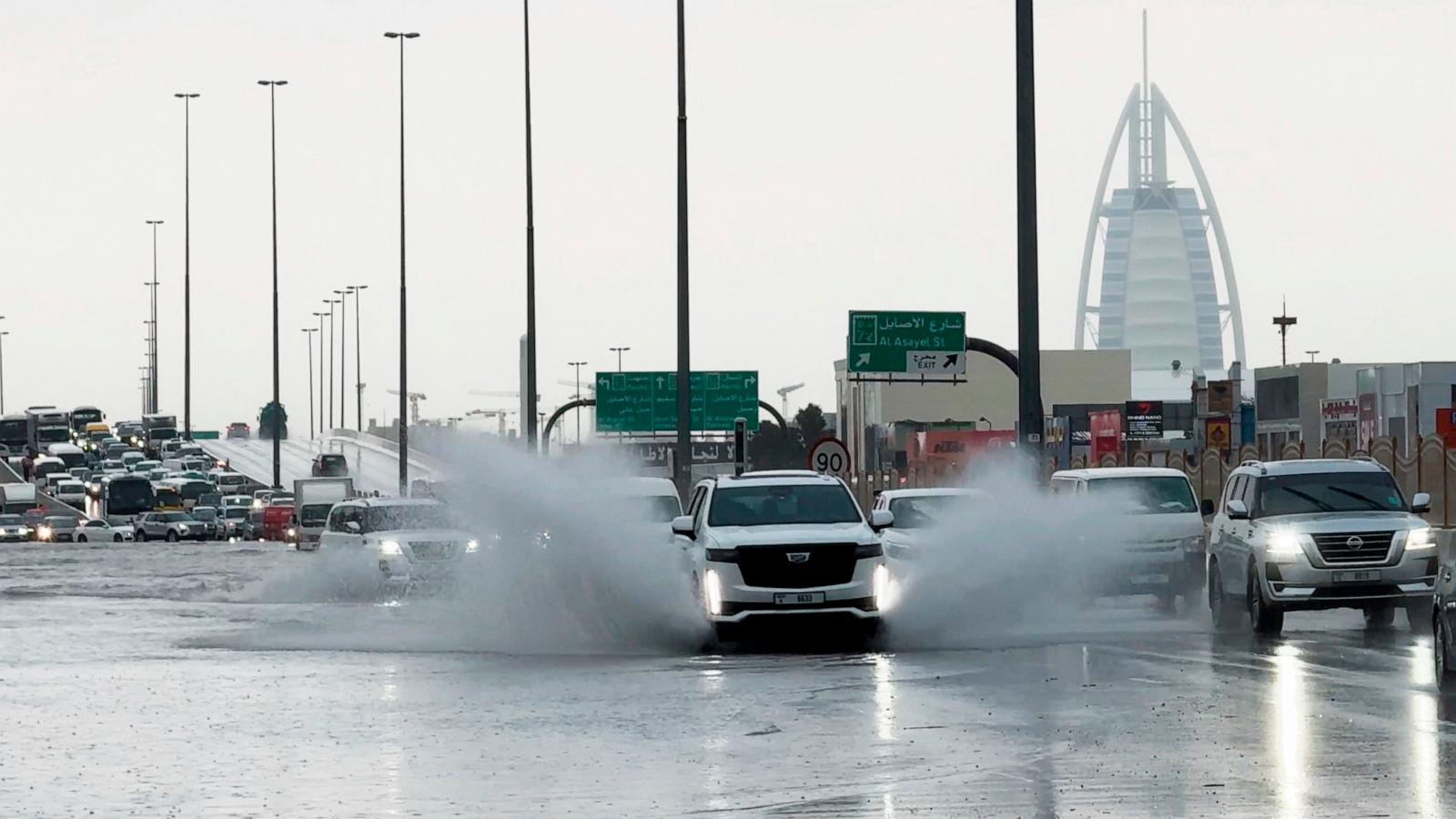Dubai’s flood history reveals a narrative of rare yet impactful deluges, shedding light on the city’s vulnerability to extreme weather events despite its desert climate. Recent floods, such as the inundation caused by heavy rains in the United Arab Emirates (UAE), resulting in at least 21 fatalities, underscore the urgent need for effective flood management strategies. Historical data points to sporadic but severe flooding episodes, driven by intense rainfall events, which have highlighted weaknesses in Dubai’s urban infrastructure and drainage systems. Despite these challenges, Dubai has invested in innovative solutions, with advancements in drainage infrastructure and rain enhancement technologies, including cloud seeding. However, projections of increased frequency and intensity of extreme weather events due to climate change present ongoing challenges. Nevertheless, Dubai’s proactive approach to disaster preparedness and sustainable infrastructure development positions the city to navigate future flood risks and emerge as a global leader in climate resilience, safeguarding the well-being and prosperity of its residents.
This week’s rain was the most in a single day in the United Arab Emirates since they started keeping track in 1949. Just last month, there were also thunderstorms in some places.
How often does it flood in dubai?
Dubai experiences flooding relatively infrequently due to its arid climate. However, when heavy rains occur, particularly during the region’s rare but intense thunderstorms, flooding can happen. These events are sporadic and not regular occurrences, but they can have significant impacts on the city’s infrastructure and residents. The frequency of flooding can vary from year to year depending on weather patterns and the intensity of rainfall events.
Rare Rainfall in Arid Regions:
The Arabian Peninsula, including the UAE and Oman, typically receives minimal rainfall annually. On average, these regions experience only a few inches of rain per year. However, when rainfall does occur, it tends to manifest in sporadic and severe bursts, rather than as regular showers.
For instance, the UAE recorded its largest 24-hour rainfall total on record this week, dating back to 1949. Remarkably, just the previous month, parts of the country had experienced another round of thunderstorms.
Oman, with its coastline along the Arabian Sea, faces additional risks from tropical cyclones. Past cyclones have brought torrential rain, powerful winds, and mudslides, resulting in significant damage to infrastructure and loss of life.
Climate Change’s Influence:
The intensification of extreme weather events, including heavier rainfall, is a recognized consequence of human-induced climate change. As global temperatures rise, the atmosphere can hold more moisture, potentially leading to more intense rainfall or snowfall events.
However, the impact of climate change on rainfall patterns is not uniform across all regions. In their latest assessment, United Nations scientists highlighted a lack of sufficient data to draw firm conclusions about rainfall trends in the Arabian Peninsula and the specific ways in which climate change is influencing them. Nevertheless, they warned that without significant efforts to mitigate climate change, extreme downpours in the region are likely to become both more frequent and more intense in the coming decades.
Cloud Seeding and Rain Enhancement:
In efforts to address water scarcity, particularly in arid regions like the UAE, cloud seeding and other rain enhancement techniques have been explored. Cloud seeding involves introducing particles into clouds to stimulate the formation of raindrops, thereby increasing precipitation.
Various countries, including Australia, China, India, Israel, South Africa, and the United States, have experimented with cloud seeding programs. Studies suggest that while these operations can modestly enhance precipitation, their effectiveness in significantly altering weather patterns remains limited. Cloud seeding can potentially amplify existing rainfall but is unlikely to transform light showers into heavy downpours.
The UAE has pursued cloud seeding for decades as part of its strategy to augment rainfall and bolster water resources. However, the role of cloud seeding in the recent storms remains uncertain. While officials confirmed that no seeding was conducted during the latest events, questions remain about whether seeding had been undertaken in the lead-up to the storms.
Urban Infrastructure Challenges:
Floods pose significant challenges for urban areas, particularly those unaccustomed to heavy rainfall. In arid regions like the UAE, cities are often ill-equipped to handle large volumes of water. Urban development, characterized by extensive paved surfaces, impedes natural drainage processes, exacerbating the risk of flooding.
For instance, a study of Sharjah, one of the UAE’s largest emirates, highlighted the city’s increased vulnerability to flooding due to rapid urbanization over the past few decades. Even relatively modest rainfall can overwhelm drainage systems, leading to inundation of streets, homes, and businesses.
